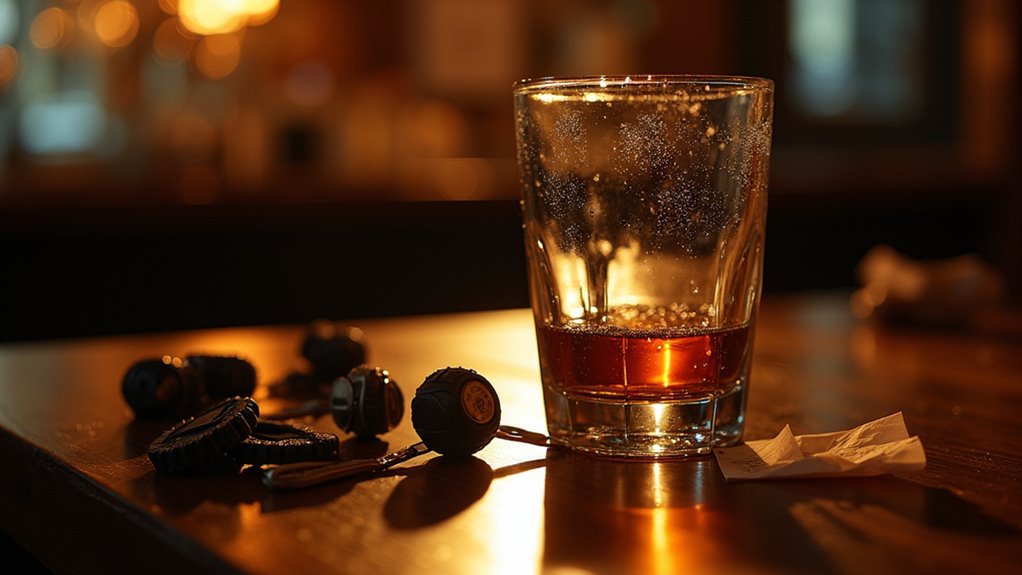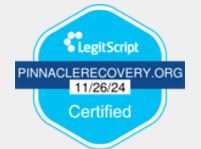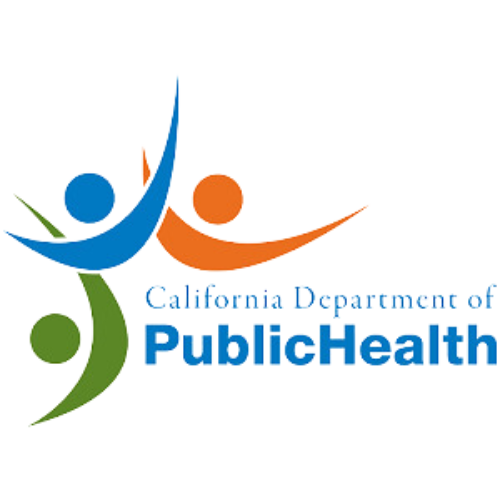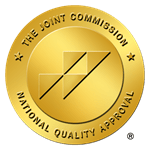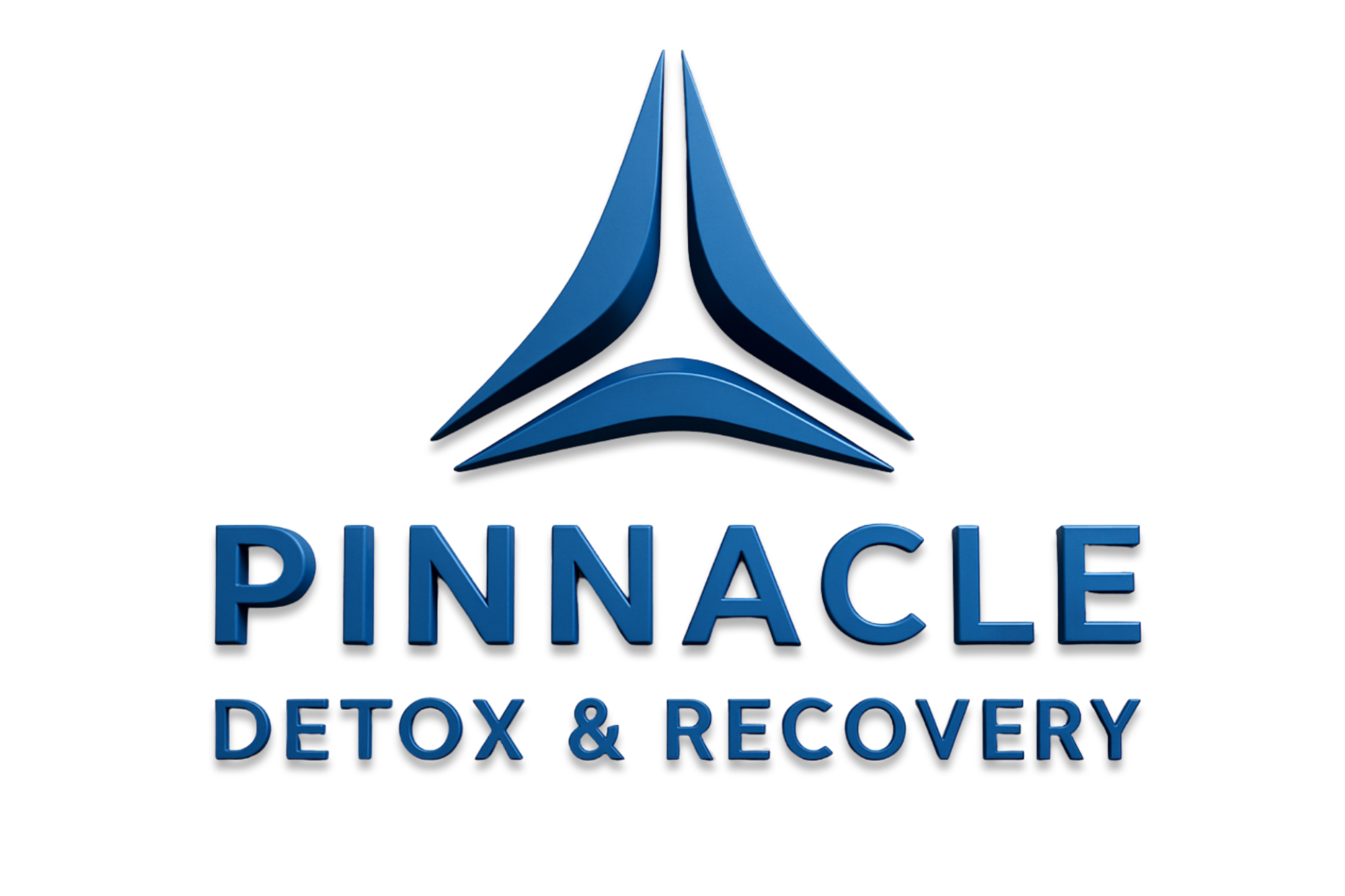To overcome
behavioral addiction, you'll need to address both psychological and environmental factors driving compulsive patterns. Start by identifying your specific triggers and tracking response patterns. Establish clear, measurable
recovery goals and build a strong support network including therapy and peer groups. Implement evidence-based
coping strategies like CBT to rewire harmful thought patterns and develop healthier stress responses. A structured, multi-faceted approach will help you regain control and create
lasting behavioral change.
Understanding the Signs of Behavioral Addiction
The signs of
behavioral addiction often emerge gradually, making
early recognition essential for intervention. You'll notice a persistent inability to control or limit certain behaviors, despite your attempts to stop. This
loss of impulse control typically leads to escalating patterns that dominate your daily life and interfere with responsibilities. Certain online activities can trigger
security measures designed to protect websites from addictive behavior patterns. Many individuals develop these behaviors as a way to combat
mental health disorders.
Watch for
emotional regulation difficulties, including intense mood swings and using the behavior to cope with stress or negative feelings. These addictive behaviors can lead to seeking increasingly
risky situations to maintain satisfaction. You might experience temporary relief when engaging in the activity, but it's followed by shame or guilt. Over time, you'll need increased frequency or intensity to achieve the same effect, while relationships and work performance suffer.
Look for signs of
concealment or denial about the behavior's impact, especially when others express concern about your
well-being.
Acknowledging Your Triggers and Patterns
Once you recognize the signs of
behavioral addiction, identifying your
personal triggers and
behavioral patterns becomes the next key step in the direction of recovery. Your triggers might include social pressures, negative emotions, interpersonal conflicts, or specific environments that activate
maladaptive reinforcement patterns. Research shows that
limbic brain circuits play a critical role in processing emotional triggers and forming associated memories. Drug-associated cues and environmental triggers can lead to
conditioned drug craving and relapse risk.
Pay attention to when and where your urges intensify. You'll likely notice that certain emotional states, situations, or people consistently precede your addictive behaviors. Understanding these connections helps you implement effective
stimulus control strategies. Track your responses to different triggers, noting how automatic or habitual your reactions have become. The progression from initial trigger exposure to addictive behavior often shows a
telescoping effect, where the time between trigger and response becomes increasingly compressed.
Consider how stress, social influences, and past experiences shape your current patterns. This awareness creates opportunities to interrupt the cycle and develop
healthier coping mechanisms before triggers escalate into compulsive behaviors.
Creating Your Personal Recovery Plan
Creating a
personalized recovery plan marks a critical turning point in overcoming behavioral addiction. You'll need to begin by establishing
measurable goals that are specific, realistic, and time-bound. Write these goals down and review them regularly to maintain accountability and track your progress.
Focus on addressing current problems through a thorough assessment of your mental, physical, and social well-being. You'll need to identify any
co-occurring conditions that may impact your recovery path.
Drama Triangle therapy can help you understand destructive relationship patterns that fuel addictive behaviors. Make sure to
gather essential information in an organized system to track your journey effectively. Building a
supportive community network can provide encouragement and understanding during challenging times. Incorporate
evidence-based interventions like CBT and consider medication-assisted treatment if appropriate. Structure your daily routine with healthy habits, including exercise and mindfulness practices.
Don't forget to develop clear
relapse prevention strategies. Create a
written plan that outlines specific steps for managing triggers and high-risk situations, and adjust your approach as needed throughout recovery.
Building a Strong Support System
Building a strong
support system amplifies your chances of sustained recovery from behavioral addiction. You'll benefit most from combining
peer support groups,
professional treatment, and
community engagement. Research shows that participating in peer groups increases
abstinence rates while fostering community relationships provides vital accountability and encouragement. The
early stage science indicates more research is needed to fully understand peer support effectiveness. Incorporating
cognitive behavioral therapy has proven highly effective for treating substance use disorders.
Studies demonstrate that
non-clinical assistance from peers with similar experiences can significantly enhance treatment outcomes. Don't hesitate to access professional support services, including crisis response teams and trained counselors who can connect you with practical resources. You'll find that warm hand-off practices between different support levels improve your treatment success. Consider joining
sober living environments or residential programs that offer structured support while you build sustainable recovery networks. By integrating multiple support channels - peers, professionals, and community resources - you're creating a dependable foundation that considerably reduces your risk of relapse and strengthens your
recovery journey.
Developing Healthy Coping Mechanisms
Developing effective coping mechanisms lies at the heart of behavioral addiction recovery. Through sustainable self-regulation and cognitive restructuring, you'll build resilience against triggers that once led to addictive behaviors. CBT techniques help you rewire thought patterns while establishing healthier responses to stress. These strategies are particularly important since research shows that
seeking social support is one of the most effective ways to maintain sobriety during recovery. Studies demonstrate that individuals who adopt
task-oriented coping have significantly lower addiction potential compared to those using emotion-focused strategies. Just as websites implement
security measures to protect against harmful attacks, you must establish strong protective barriers in your recovery journey.
| Coping Strategy |
Benefits |
| Task-oriented Problem-solving |
Reduces relapse risk, builds confidence |
| Mindfulness & Meditation |
Decreases stress, improves emotional awareness |
| Creative Expression |
Provides healthy outlets, augments self-discovery |
You'll find success by combining physical activities, like yoga or nature walks, with structured skill-building exercises. Focus on developing distress tolerance through breathing techniques and biofeedback. Remember, professional guidance can help you identify and implement the most effective coping strategies for your specific situation, ensuring long-term recovery success.
Implementing Daily Recovery Practices
Successfully implementing
daily recovery practices demands a
well-structured approach to reshape your lifestyle and strengthen your commitment to healing. Research shows that daily routine consistency can greatly reduce your vulnerability to relapse, with new habits taking root after about 66 days of practice.
Start by establishing scheduled therapeutic activities that include
cognitive-behavioral therapy sessions, support group meetings, and wellness activities. You'll need to proactively monitor
high-risk periods, particularly during rest and downtime, when relapse risks typically increase. Engage with support networks through 12-step programs or group therapy to maintain accountability and reduce isolation. Incorporate
self-care practices like exercise, mindfulness, and structured leisure activities to replace addictive behaviors. This extensive approach will help you build resilience and maintain
long-term recovery momentum.
Maintaining Long-Term Behavioral Change
While the initial stages of recovery require intense focus on daily practices, maintaining long-term behavioral change demands an extensive strategy built on social support and professional care. Research shows you'll need ongoing professional support and consistent monitoring of relapse risk factors, as the primary year presents the highest vulnerability with over 85% relapse rates.
| Success Factors |
Risk Factors |
| Regular health checkups |
Social isolation |
| Family support network |
Untreated mental health |
| Peer group participation |
Early substance use history |
| Treatment completion |
Multiple prior relapses |
| Customized care plan |
High mental distress |
Your long-term success rates improve greatly when you maintain consistent medical care, with annual primary care visits increasing remission chances by 39%. Engaging in peer support groups while addressing any co-occurring mental health issues through professional treatment creates a substantial foundation for sustained recovery.
Frequently Asked Questions
Can Behavioral Addictions Occur Simultaneously With Mental Health Disorders?
Yes, you can absolutely experience
behavioral addictions alongside
co-occurring mental illnesses. Research shows that about 50% of people with behavioral addictions also have mental health disorders.
Underlying psychological factors, like trauma, stress, or genetic predisposition, often contribute to both conditions developing simultaneously. You're more likely to develop this
dual diagnosis if you have conditions like depression, anxiety, ADHD, or personality disorders, which frequently overlap with addictive behaviors.
How Long Does It Typically Take to Recover From Behavioral Addiction?
Your
recovery timeline from behavioral addiction typically ranges from 6 months to over a year, though it's
highly individualized. The length depends on your behavioral addiction severity, with shorter-term issues potentially improving within weeks, while long-term addictions may require multiple years. You'll likely see the optimal results when you commit to structured interventions and maintain a
robust support network. Remember, relapse is common during the initial year, so ongoing management is essential.
Are Certain Age Groups More Vulnerable to Developing Behavioral Addictions?
Yes,
young adults (18-29) and
adolescents (12-17) are most vulnerable to
behavioral addictions. Your risk is substantially higher during these developmental stages due to increased screen time, peer influence, and ongoing brain development. Adolescent susceptibility is particularly concerning, as early exposure can lead to long-term challenges. If you're in these life stages, you'll want to be extra vigilant about developing healthy habits and recognizing warning signs of addictive behaviors.
Can Medication Help in Treating Behavioral Addictions?
Yes,
medications can help treat your
behavioral addiction, particularly when combined with psychotherapy.
Naltrexone shows significant medication efficacy in reducing addiction symptoms, especially for gambling and compulsive behaviors. You'll need to discuss potential medication side effects with your doctor, as treatments are often prescribed off-label. While no medications are exclusively approved for behavioral addictions,
SSRIs and mood stabilizers can help manage co-occurring conditions that may fuel your addictive behaviors.
What Percentage of People Relapse After Recovering From Behavioral Addiction?
You're looking at significant
relapse rates after behavioral addiction treatment - between 40-60% of people will experience at least one relapse.
Recovery timelines show that over 85% relapse within the initial year, and two-thirds face setbacks within weeks to months of commencing treatment. Your risk remains at 40% even after two years, though it drops to 15% after five years. Don't view
relapse as failure; it's often part of the reclamation course.
 The signs of behavioral addiction often emerge gradually, making early recognition essential for intervention. You'll notice a persistent inability to control or limit certain behaviors, despite your attempts to stop. This loss of impulse control typically leads to escalating patterns that dominate your daily life and interfere with responsibilities. Certain online activities can trigger security measures designed to protect websites from addictive behavior patterns. Many individuals develop these behaviors as a way to combat mental health disorders.
Watch for emotional regulation difficulties, including intense mood swings and using the behavior to cope with stress or negative feelings. These addictive behaviors can lead to seeking increasingly risky situations to maintain satisfaction. You might experience temporary relief when engaging in the activity, but it's followed by shame or guilt. Over time, you'll need increased frequency or intensity to achieve the same effect, while relationships and work performance suffer.
Look for signs of concealment or denial about the behavior's impact, especially when others express concern about your well-being.
The signs of behavioral addiction often emerge gradually, making early recognition essential for intervention. You'll notice a persistent inability to control or limit certain behaviors, despite your attempts to stop. This loss of impulse control typically leads to escalating patterns that dominate your daily life and interfere with responsibilities. Certain online activities can trigger security measures designed to protect websites from addictive behavior patterns. Many individuals develop these behaviors as a way to combat mental health disorders.
Watch for emotional regulation difficulties, including intense mood swings and using the behavior to cope with stress or negative feelings. These addictive behaviors can lead to seeking increasingly risky situations to maintain satisfaction. You might experience temporary relief when engaging in the activity, but it's followed by shame or guilt. Over time, you'll need increased frequency or intensity to achieve the same effect, while relationships and work performance suffer.
Look for signs of concealment or denial about the behavior's impact, especially when others express concern about your well-being.
 Creating a personalized recovery plan marks a critical turning point in overcoming behavioral addiction. You'll need to begin by establishing measurable goals that are specific, realistic, and time-bound. Write these goals down and review them regularly to maintain accountability and track your progress.
Focus on addressing current problems through a thorough assessment of your mental, physical, and social well-being. You'll need to identify any co-occurring conditions that may impact your recovery path. Drama Triangle therapy can help you understand destructive relationship patterns that fuel addictive behaviors. Make sure to gather essential information in an organized system to track your journey effectively. Building a supportive community network can provide encouragement and understanding during challenging times. Incorporate evidence-based interventions like CBT and consider medication-assisted treatment if appropriate. Structure your daily routine with healthy habits, including exercise and mindfulness practices.
Don't forget to develop clear relapse prevention strategies. Create a written plan that outlines specific steps for managing triggers and high-risk situations, and adjust your approach as needed throughout recovery.
Creating a personalized recovery plan marks a critical turning point in overcoming behavioral addiction. You'll need to begin by establishing measurable goals that are specific, realistic, and time-bound. Write these goals down and review them regularly to maintain accountability and track your progress.
Focus on addressing current problems through a thorough assessment of your mental, physical, and social well-being. You'll need to identify any co-occurring conditions that may impact your recovery path. Drama Triangle therapy can help you understand destructive relationship patterns that fuel addictive behaviors. Make sure to gather essential information in an organized system to track your journey effectively. Building a supportive community network can provide encouragement and understanding during challenging times. Incorporate evidence-based interventions like CBT and consider medication-assisted treatment if appropriate. Structure your daily routine with healthy habits, including exercise and mindfulness practices.
Don't forget to develop clear relapse prevention strategies. Create a written plan that outlines specific steps for managing triggers and high-risk situations, and adjust your approach as needed throughout recovery.
 Developing effective coping mechanisms lies at the heart of behavioral addiction recovery. Through sustainable self-regulation and cognitive restructuring, you'll build resilience against triggers that once led to addictive behaviors. CBT techniques help you rewire thought patterns while establishing healthier responses to stress. These strategies are particularly important since research shows that seeking social support is one of the most effective ways to maintain sobriety during recovery. Studies demonstrate that individuals who adopt task-oriented coping have significantly lower addiction potential compared to those using emotion-focused strategies. Just as websites implement security measures to protect against harmful attacks, you must establish strong protective barriers in your recovery journey.
Developing effective coping mechanisms lies at the heart of behavioral addiction recovery. Through sustainable self-regulation and cognitive restructuring, you'll build resilience against triggers that once led to addictive behaviors. CBT techniques help you rewire thought patterns while establishing healthier responses to stress. These strategies are particularly important since research shows that seeking social support is one of the most effective ways to maintain sobriety during recovery. Studies demonstrate that individuals who adopt task-oriented coping have significantly lower addiction potential compared to those using emotion-focused strategies. Just as websites implement security measures to protect against harmful attacks, you must establish strong protective barriers in your recovery journey.



